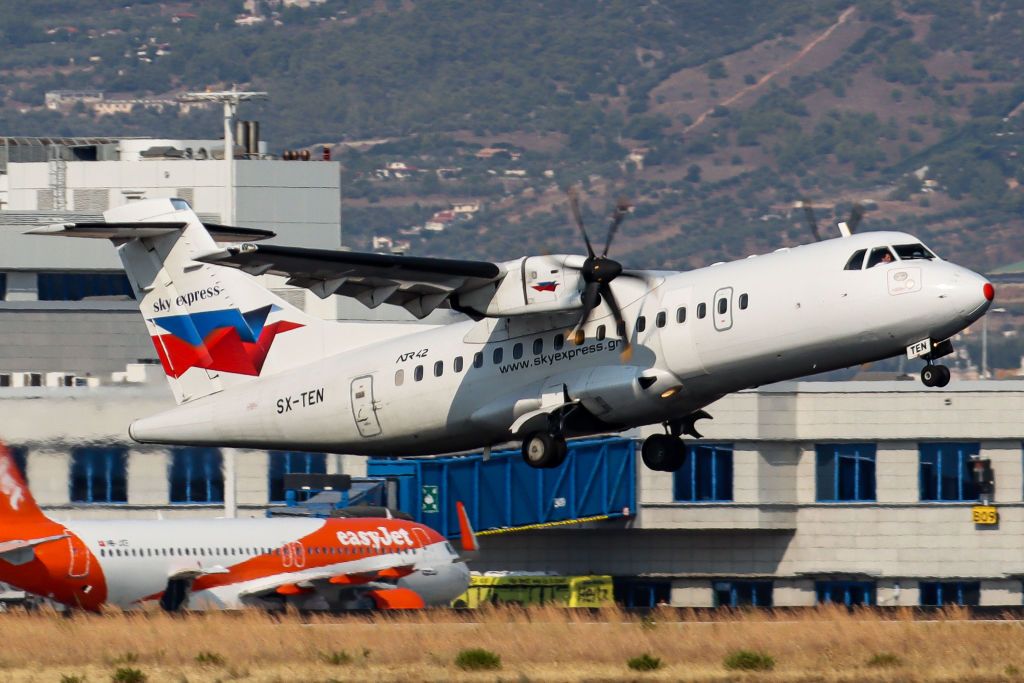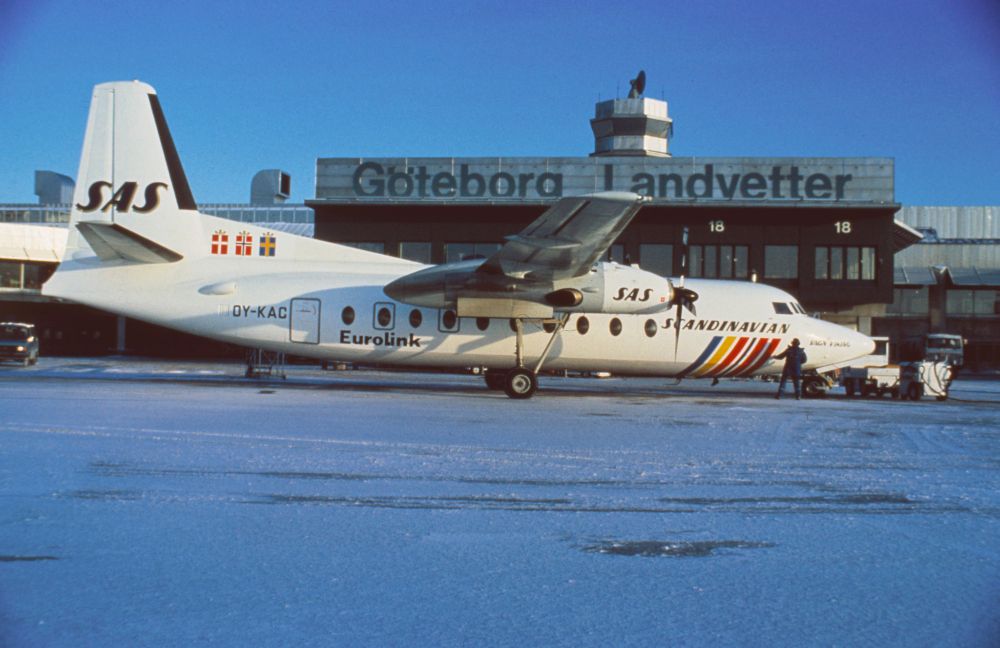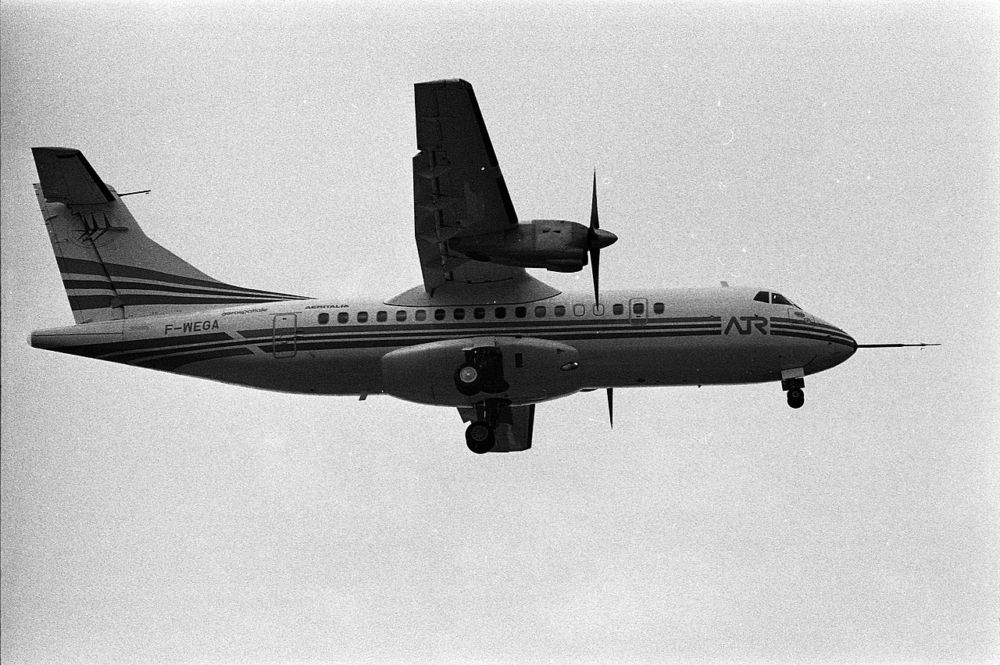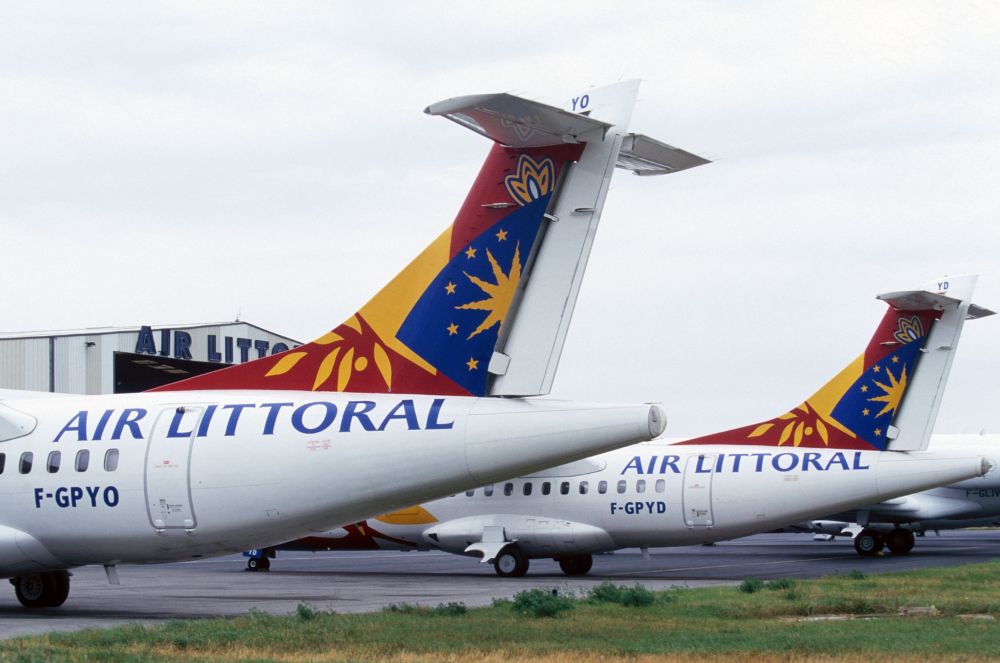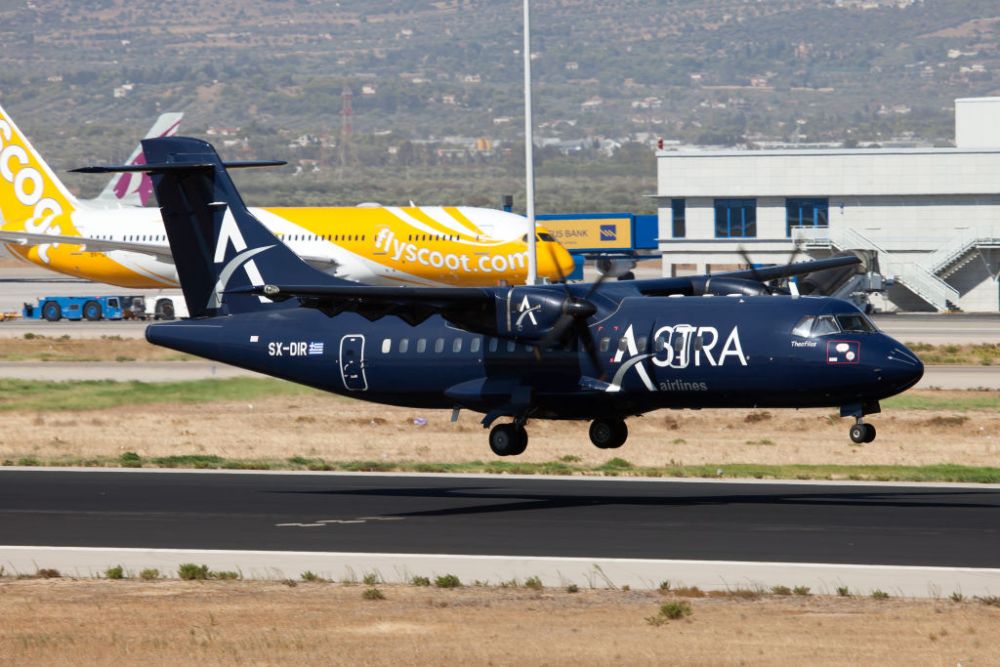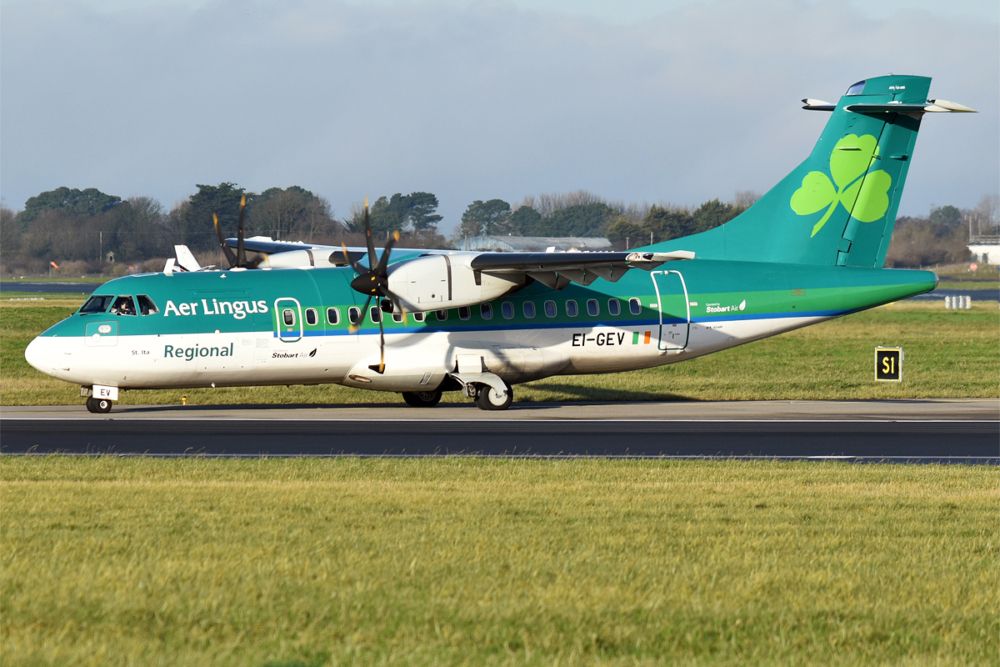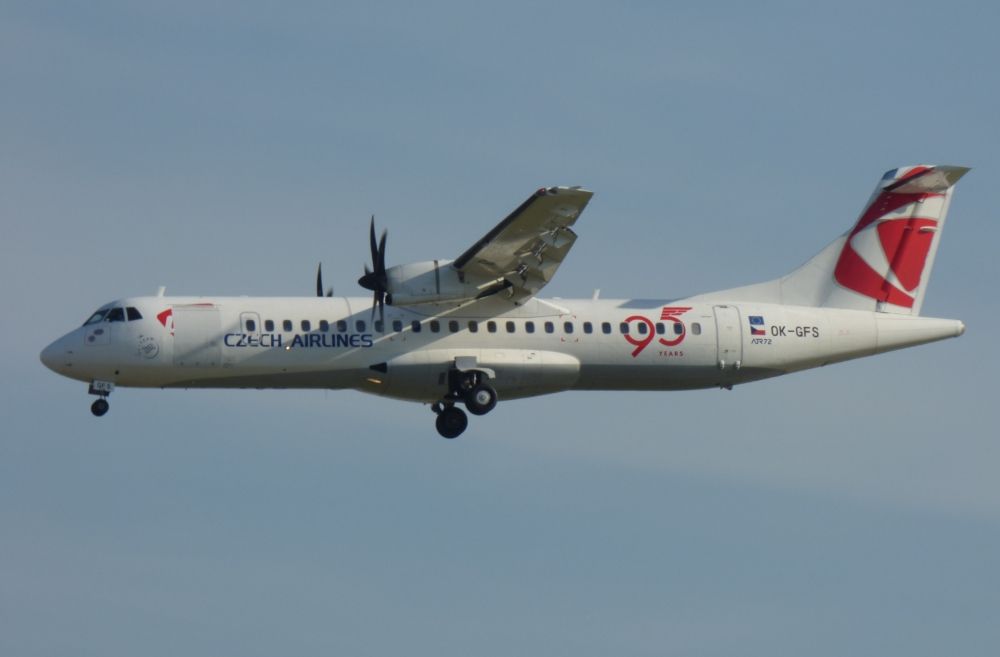Yesterday marked a significant anniversary in the world of regional aircraft. Specifically, it has now been 37 years since the ATR 42 took to the skies. This French-Italian turboprop design has become a popular fixture at regional operators worldwide since making its first test flight all those years ago. Let's take a closer look at the aircraft's story.
In the beginning
Europe is no stranger to multi-national aircraft manufacturing companies. Indeed, Airbus, one of the world's two biggest players in this field, has facilities in locations throughout the continent. The ATR 42 is also the product of a cross-border manufacturing enterprise.
Based in Toulouse, France, ATR is a French-Italian manufacturer whose acronym works in both languages. It stands for Aerei da Trasporto Regionale or Avions de transport régional, simply meaning 'Regional Transport Airplanes.' The company came into existence in 1981, when Aeritalia and Aérospatiale signed a co-operation agreement.
The goal for this consortium was to produce a regional airliner that consumed half as much fuel as the existing Hawker Siddeley HS 748 and Fokker F.27 'Friendship' turboprops. Both companies had already been working on new regional airliners before joining forces. Aeritalia's design was called the AIT 230, and Aérospatiale's was the AS 35.
Stay informed: Sign up for our daily and weekly aviation news digests.
The ATR 42 emerges
With its design brief of a fuel-efficient turboprop featuring 40-50 seats in mind, ATR got to work on producing its first-ever commercial aircraft. The company aimed to cut fuel consumption by nearly half over 200 NM (370 km) compared to the HS 748 and F.27 (430 kg vs 790 kg). By 1983, it already had a customer service department in place.
With worldwide infrastructure in place to support customers wherever they may be, it took less than three years for ATR's first plane to hit the skies. Now designated as the ATR 42, the aircraft took its maiden test flight from ATR's Toulouse base on August 16th, 1984.
The registration of the first-ever ATR 42, as seen above, was F-WEGA. Sadly, this prototype testbed aircraft served the company for less than four years. According to ATDB.aero, it crashed shortly after takeoff while simulating an engine failure in June 1988. This damaged it beyond repair, although ASN reports that all three crew members survived.
Just over a year after the ATR 42's maiden test flight, the first production example was delivered to its customer. This took place in December 1985, with its recipient being French carrier Air Littoral. The airline introduced the type on commercial flights that month.
Prototype and testbed ATR 42s were designated as the 42-200 variant. However, production examples differed from these by using 42-300 as their designation.
Several different variants
The ATR 42-200 prototypes and the original ATR 42-300 production aircraft were not the only versions ATR produced. For example, the company offered a 'hot and high' 42-320 version with more powerful Pratt & Whitney Canada PW121 engines. These had 100 extra shaft horsepower (2,100 vs 2,000) than the PW120s used on the 42-300.
Both of these variants, as well as the ATR 42-200 prototypes, had four-bladed propellers. However, when producing the 42-400 variant, ATR opted to switch to a six-blade approach. Despite the difference in the number of blades, the PW121 engines on this rare variant (five examples) remained the same as on the existing ATR 42-320.
Meanwhile, ATR introduced the 42-500 in October 1995. This represented something of a changing of the guard as far as the type's main production variants were concerned. After all, the original ATR 42-300 ceased production a year later, in 1996.
The two most modern versions
The 42-500's improved PW127E engines have an increased power output of 2,400 shaft horsepower. Much like the 42-400 version, this variant also has six-bladed propellers. The aircraft also offers a better passenger experience, including a newly-designed cabin. Furthermore, noise levels are lower thanks to improved insulation.
The most recent variant of the aircraft is the 42-600, which ATR launched in October 2007. This version's PW127M engines offer a 5% increase in thrust, with their power actually able to go even higher thanks to the presence of a boost function.
This underlines the ATR 42's status as an ideal aircraft family for hot and high operations. At the front of the aircraft, pilots of the ATR 42-600 have a five-screen glass cockpit at their disposal. ATR has also developed an STOL-capable version, known as the 42-600S. This variant will require just 800 meters of runway, and PNG Air will launch it.
Performance and specifications
Having established the multi-variant nature of the ATR 42 family, let's take a look at how it fares in terms of its performance and specifications. With a typical 48-seat configuration, it has a range of between 459 NM / 850 km (42-300) and 794 NM / 1,470 km (42-400). The 42-5/600 falls in between, although at the higher end of the spectrum (716 NM / 326 km).
While the 42-400 has the greatest range, its cruise speed (261 knots / 484 km/h) is the slowest version of ATR's popular turboprop. Indeed, it is outranked by both the original 42-300 (270 knots / 500 km/h) and the modern 42-5/600 (300 knots / 556 km/h).
All versions of the ATR 42 have the same dimensions. The aircraft is 22.67 meters long, and has a wingspan of 24.57 meters. In terms of height, it stands 7.59 meters tall. Data from ch-aviation.com lists 483 AT 42s as having been built, with another 39 on order. The type spawned the longer ATR 72, of which 1,125 have been built (plus 125 on order).
Crunching the numbers
Let's finish by looking at some more data from our friends at ch-aviation regarding the ATR 42. As we have established, the aircraft remains in production, with 39 on order to compliment the 483 existing examples. Of these 483 ATR 42s across all variants, ch-aviation's data shows that just under half (203 examples) are active today.
Of the active ATR 42s, the oldest example is Blue Ridge Aero Services' N212AZ. This ATR 42-300 has been in service for over 35 years. Meanwhile, Trans Am Aero Express del Ecuador operates the active ATR 42 with the most hours accrued. This 33.5-year-old 42-300F (HC-CDX) had accumulated an impressive 55,521 hours as of June 2020.
Finally, the active ATR 42 with the most flight cycles is a Calm Air 42-300 registered as C-GKKR. This 31.12-year-old turboprop had accrued 62,574 cycles (comprising 51,111 hours) as of June 2020. Calm Air operates all of the top three ATR 42s when it comes to accumulating cycles, a sign of a reliable aircraft that is most at home on short hops.
What do you make of the ATR 42? Have you ever flown on one of these French-Italian turboprop airliners? Let us know your thoughts and experiences in the comments!

